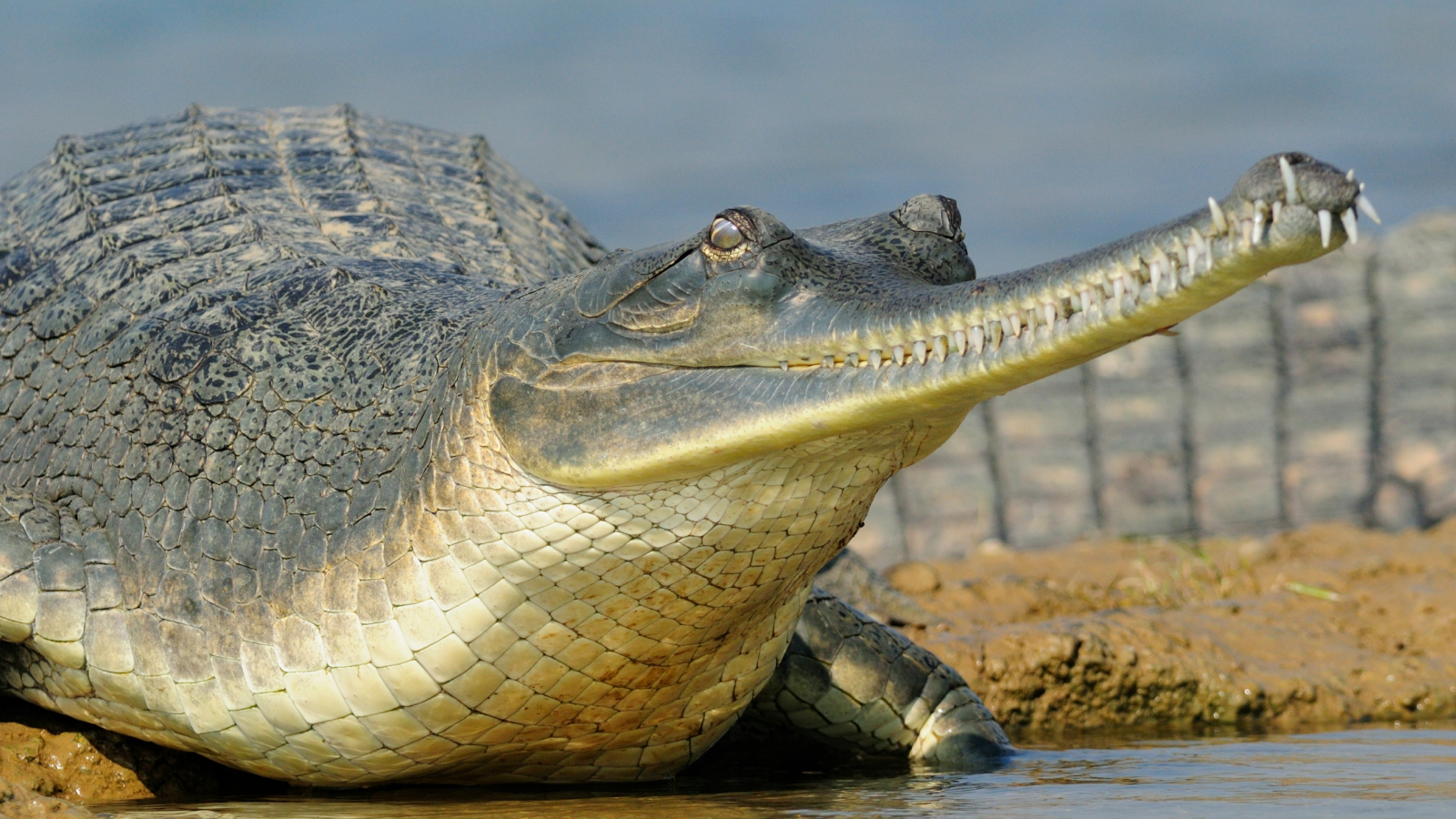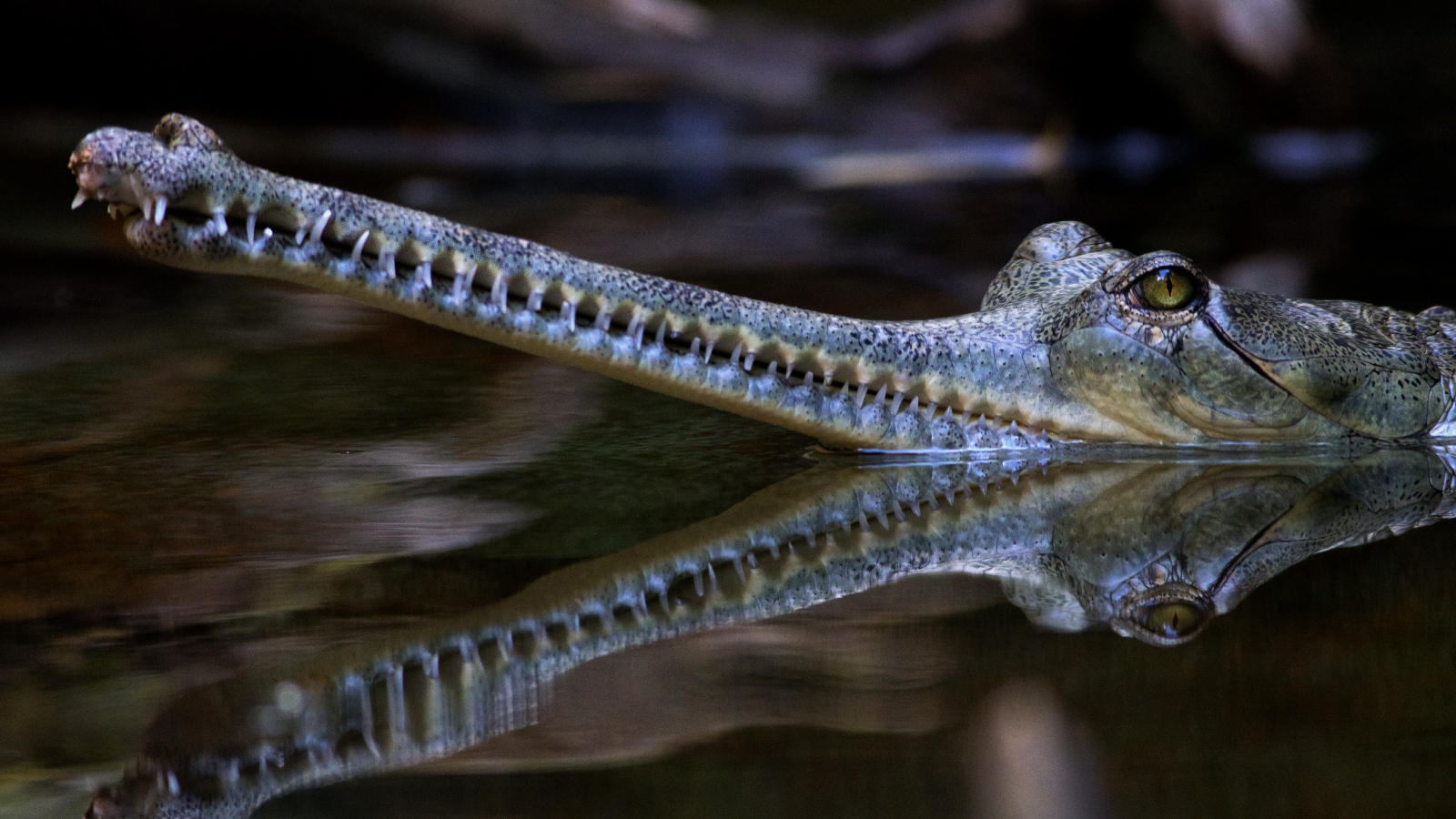
Name: Gharial (Gavialis gangeticus)
Where it lives: Freshwater rivers in India and Nepal
What it eats: Fish. Juveniles also eat insects, frogs and crustaceans.
Why it's awesome: The gharial is known for its long, skinny snout, which looks like it got slammed in a door.
An adult male has a "ghara" at the end of its snout: a lightbulb-shaped bump, named after a bulbous Indian pot. This bizarre lump looks attractive to females and helps males woo their mates by blowing bubbles and creating a strange love song.
This ghara "partially covers the crocodile's nostrils and acts as a vocal resonator, creating a loud, buzzing sound when the gharial vocalizes," according to Smithsonian’s National Zoo and Conservation Biology Institute.
If these crocodilian pickup lines are successful and the male attracts a female — or several, as gharials are polygamous — the pair mate. This usually happens in December or January. In March or April, when the dry season arrives, females dig nests and lay around 40 eggs.
Related: Low-flying helicopter sparks massive crocodile orgy in Australia
These large eggs are the biggest of all crocodilian eggs. Weighing up to 6 ounces (170 grams), they're about the same weight as a hockey puck. Once fully grown, adults can reach 15 feet (4.5 meters) and, on average, weigh around 350 pounds (160 kilograms).

"As with all crocodilians, the sex of the hatchlings is determined during incubation," according to Smithsonian. Incubation can take between 60 and 80 days. Babies stay with their mother for several weeks, or sometimes months, after hatching.
Although they look like crocodiles or alligators, gharials split off from other crocodilian species over 40 million years ago.
Unlike crocs and gators, gharials don't ambush their prey. Instead, swiping their snout from left to right allows them to detect vibrations in the water. Using this method, they find nearby fish and chomp on them with their interlocking teeth.
These animals are well-adapted to watery habitats but can’t move well on land because their leg muscles are too weak, so they slide on their bellies to get around above water.
Gharials were once plentiful between Pakistan and Myanmar, with an estimated 5,000 to 10,000 individuals in the wild in the 1940s. They are now critically endangered as a result of hunting, fishing and habitat loss, with around 650 mature individuals left. Captive breeding, nest monitoring and other conservation activities helped boost this number from around 250 in 2006.







